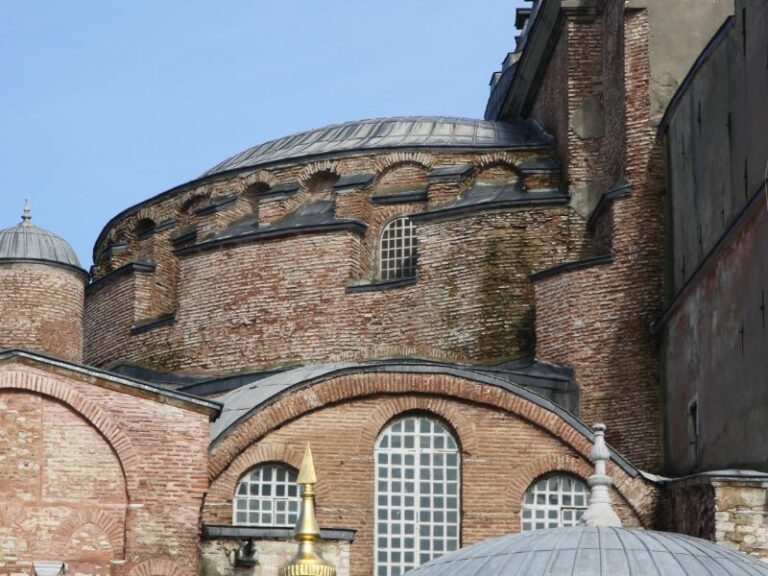Introduction
The Basilica of Saint John in Ephesus is not merely a relic but a testament to the confluence of history, religion, and architectural grandeur. Located at the foot of the acropolis of Ayasuluk, this ancient basilica is an allure for history enthusiasts, travelers, and those captivated by Ephesus’s rich heritage.
It stands as a symbol of faith, architectural innovation, and the indelible mark of Saint John the Apostle, drawing visitors into its storied past.
The History of the Basilica of Saint John in Ephesus
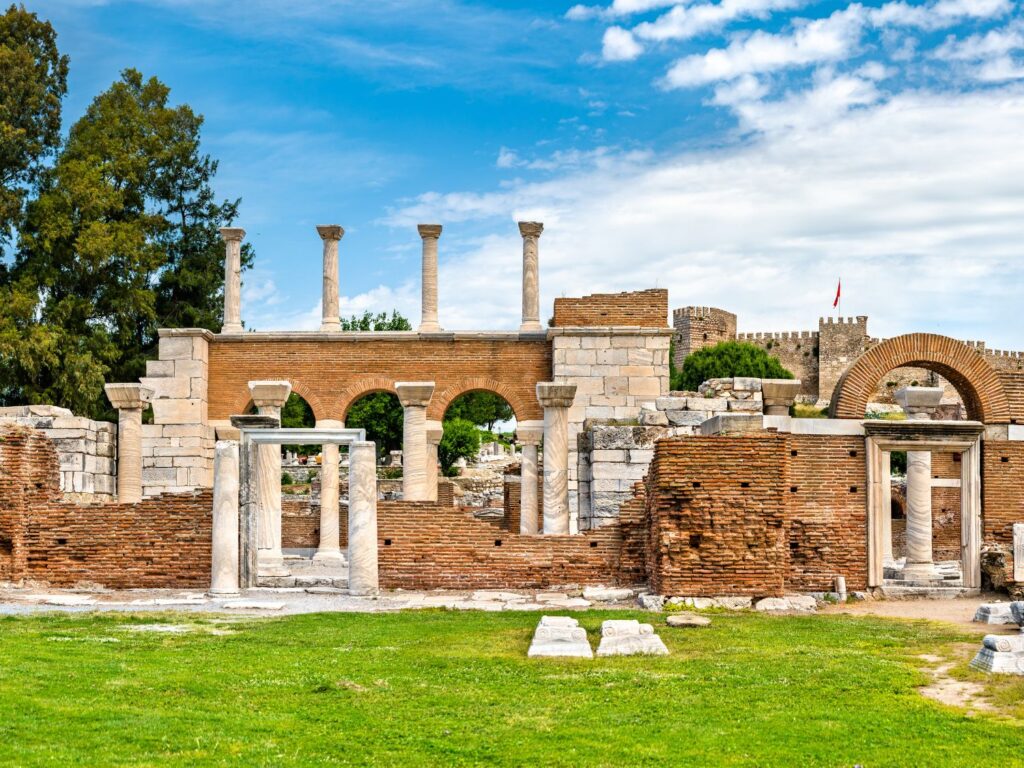
Construction and Context
Constructed in the 6th century under the auspices of Emperor Justinian I, the Basilica of Saint John in Ephesus was built on what was believed to be the burial site of Saint John the Apostle. Its creation during this time was not merely a religious endeavor but also a demonstration of the Byzantine Empire’s might and dedication to Christianity.
Emperor Justinian, along with his wife Theodora, sought to solidify their legacy through monumental constructions, including the renowned Hagia Sophia in Constantinople.
Saint John the Apostle
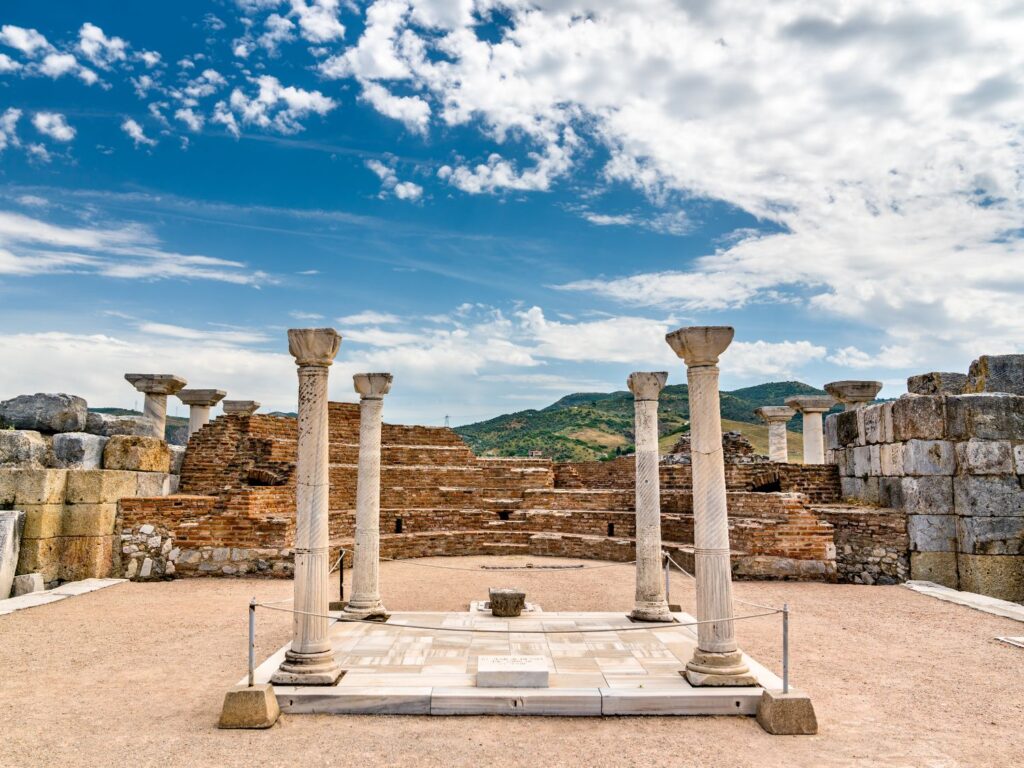
Saint John the Apostle, also known as John the Evangelist, John the Theologian, or John the Divine, holds a significant place in Christian tradition as one of the original Twelve Apostles of Jesus Christ.
Distinguished for his close relationship with Jesus and his contributions to the New Testament, John authored the Gospel of John and the Book of Revelation. His deep bond with Jesus is often depicted in religious art, such as the scene of the Last Supper where John is shown leaning on Jesus.
Traditionally, John is believed to be the son of Zebedee and Salome, making him the brother of Apostle James.
Intriguingly, some sources, such as the Protoevangelium of James, suggest that Salome was a daughter of Joseph, the earthly guardian of Jesus, which would make John a grandson of Joseph and further intertwine his life with the Holy Family.
John was notably present at several pivotal moments in Jesus’s ministry, including the Transfiguration alongside Peter and his brother James. After Jesus’s resurrection, John is said to have traveled to Ephesus with the Virgin Mary, where he spent his later years.
According to Christian tradition, he settled in Ephesus after being exiled to the island of Patmos by Emperor Domitian around 90-95 A.D. It was during this exile that John received the visions documented in the Book of Revelation, adding a profound eschatological dimension to Christian doctrine.
Returning to Ephesus, John continued his evangelistic work until his death, which tradition holds occurred around the age of 98. His presence and teachings significantly influenced the early Christian community in Ephesus, making it one of the “Seven Churches of the Apocalypse” mentioned in the New Testament.
Unique among the apostles, John did not meet a martyr’s death; instead, he is believed to have lived well into old age.
His final resting place is considered to be within the Basilica of Saint John in Ephesus, a site of veneration and historical importance. John’s legacy is one of theological depth and enduring influence, profoundly shaping early Christian thought and community.
Architectural Insights
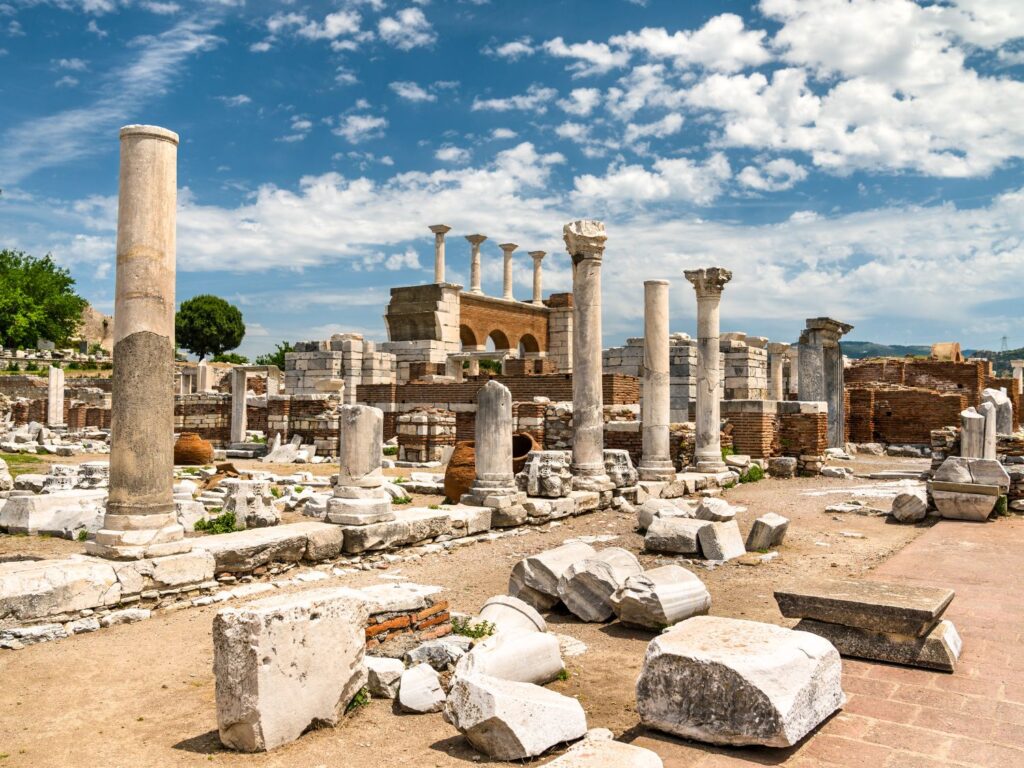
Design and Materials
The Basilica of Saint John in Ephesus was an architectural marvel of its time, boasting a cross-shaped layout with six domes. Spanning 130 meters in length and 40 meters in width, it was the third-largest Byzantine church, signaling its importance.
The structure was built using materials repurposed from earlier constructions, including the Hellenistic stadium of ancient Ephesus. The use of these materials not only highlights the resourcefulness of the builders but also provides a tangible link to the site’s layered history.
The “Gate of Persecution”
One of the most intriguing elements of the basilica is the “Gate of Persecution.” While the origin of its name remains a mystery, theories suggest it could be linked to the early Christian martyrs of Ephesus or an ancient Greek relief depicting “The Persecution of Hector by Achilles.”
This gate, constructed in the 6th century, is a vivid reminder of the historical and cultural amalgamations that characterize Ephesus.
Fortified Precinct
The basilica is part of a larger fortified precinct, with its northern fortifications abutting the walls of the Ayasuluk citadel. These defensive structures were reinforced during the 7th and 8th centuries in response to Arab attacks, underscoring the region’s strategic and religious significance.
Discoveries in Basilica of Saint John in Ephesus
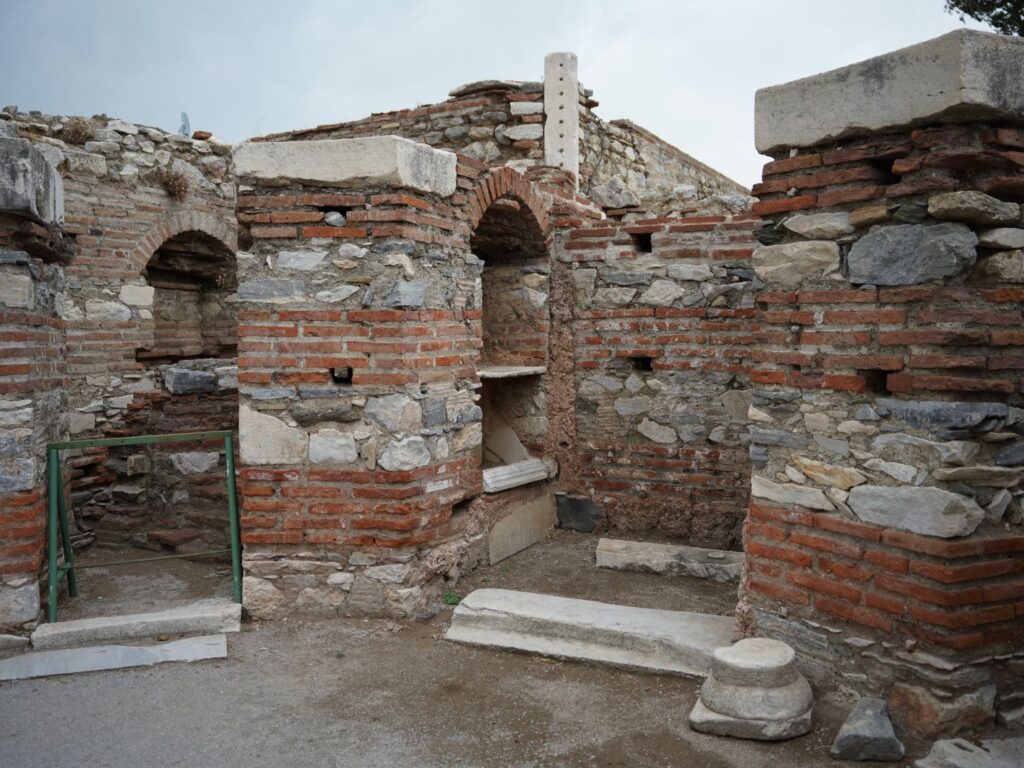
Ancient Gameboards
The discovery of ancient gameboards in Ephesus offers a unique window into the daily lives and leisure activities of its inhabitants. One notable find includes a marble block with bas relief carvings, speculated to depict a gameboard for an ancient version of nine men’s morris.
Such carvings were often found in public spaces like stadiums and gymnasia, possibly scratched by bored soldiers or locals passing the time. The Ephesus Museum in Selçuk now creatively displays one such gameboard, providing context for visitors.
Gladiatorial Games
Ephesus’s rich history extends to its involvement in gladiatorial games, as evidenced by the various monuments and tombs dedicated to gladiators. The marble block carvings, featuring weapons like tridents and swords, hint at the city’s vibrant and sometimes brutal sporting culture.
These discoveries enrich our understanding of Ephesus as a dynamic urban center in the ancient world.
The Legacy of Saint John
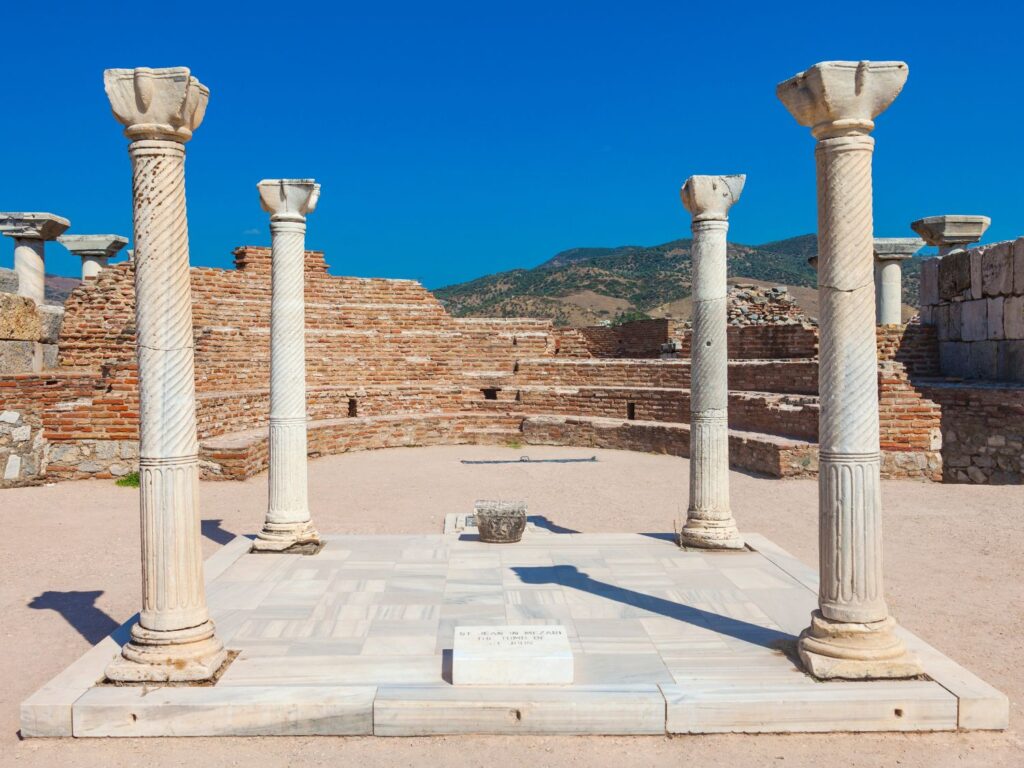
Exile and Return
Saint John’s exile to Patmos and subsequent return to Ephesus are pivotal events in the Christian narrative. His writings, particularly the Book of Revelation, have had a profound impact on Christian theology and eschatology.
The basilica, built to honor his final resting place, became a major pilgrimage site, celebrated for its supposed miracle cures attributed to the fine dust from his grave.
Influence on Christianity
John’s influence extends beyond his writings. Known by various titles—John the Apostle, John the Evangelist, John the Divine, and John the Theologian—his legacy is intertwined with the foundational texts of Christianity. The basilica stands as a testament to his enduring impact, drawing pilgrims and scholars alike to Ephesus.
Pilgrimage and Miracles
The basilica’s significance as a pilgrimage site cannot be overstated. Pilgrims believed that the dust from John’s grave had miraculous healing properties, further solidifying the site’s sacred status.
The basilica’s impressive ruins, including the central dome under which John is believed to be buried, continue to inspire awe and reverence among visitors.
Conclusion
The Basilica of Saint John in Ephesus is more than an archaeological site; it is a testament to Saint John the Apostle’s enduring legacy and the Byzantine Empire’s historical grandeur. Its architectural sophistication, historical significance, and religious importance make it a must-visit for history enthusiasts and travelers.


